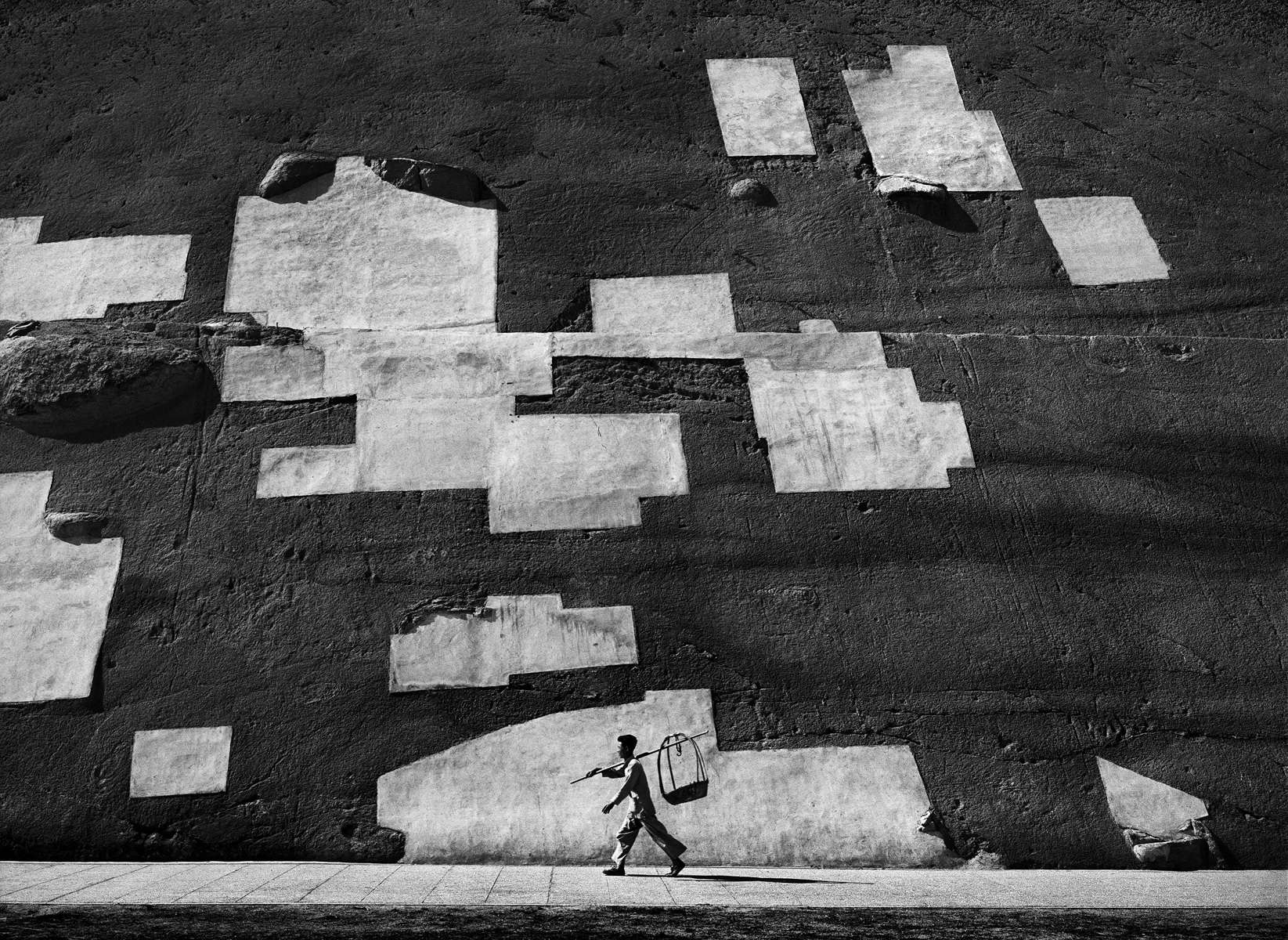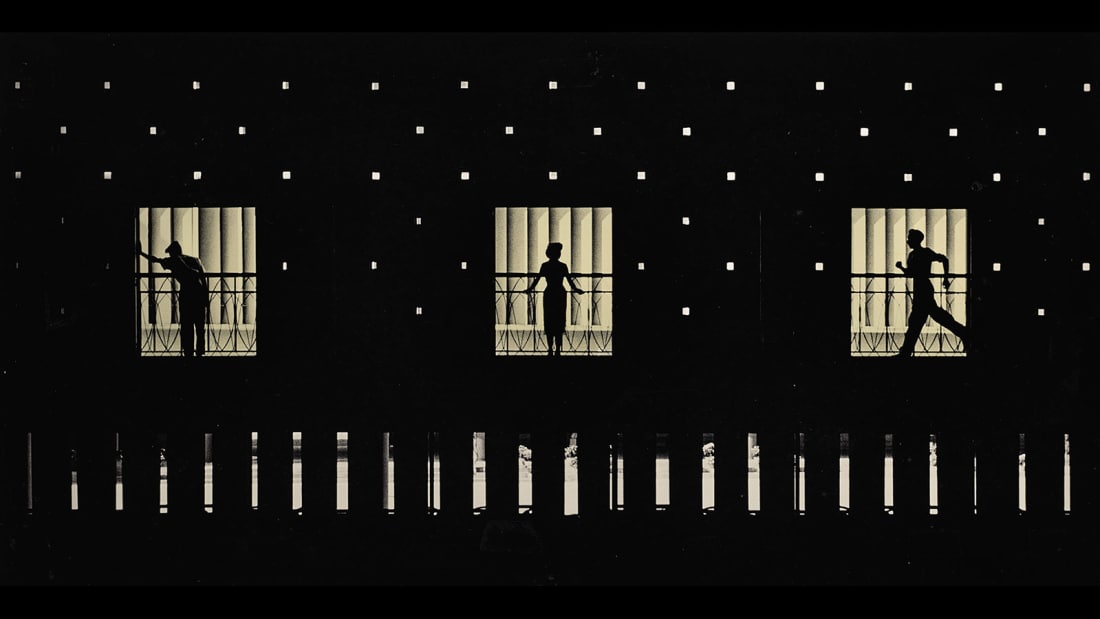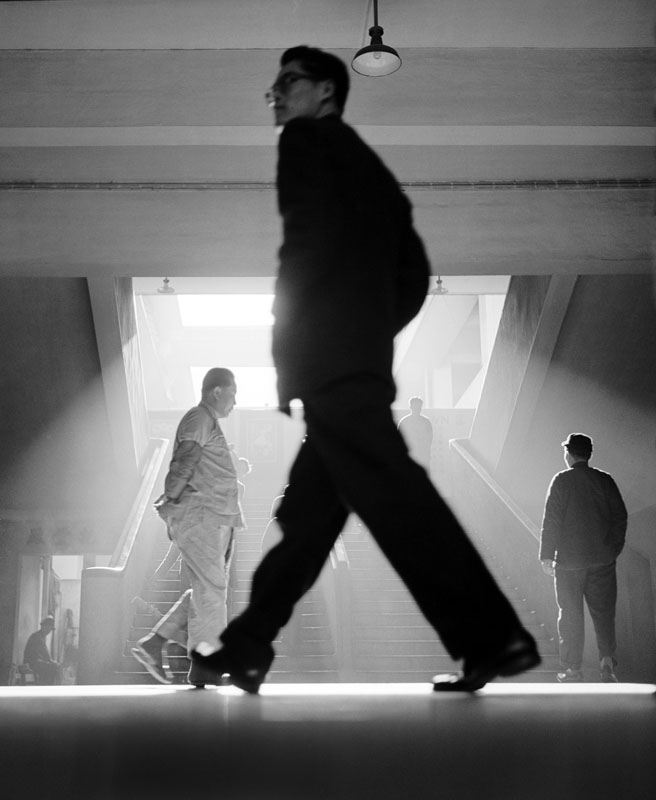Translator: Ravita Buaphuan
Despite being produced for more than 60 years, the black-and-white photography that depicts people’s livelihood and atmosphere in Hong Kong by Chinese street photographer, Fan Ho, remains impactful. Especially its outstanding use of light and shadow which is unique and stylish, making it hard for the audiences to take their eyes off.
This is the masterpiece that sent him to become the master of light in the industry, verified with more than 300 prizes from both local and international photography awards.
But along the journey towards this point, Ho’s life had been through a lot, from his dream to be a storyteller, becoming the most successful photographer, and a director of Shaw Brothers, the legendary film studio of Hong Kong.
In cooperation with D1839, The Normal Hero would like to unfold the life and identity of Fan Ho, to let you understand why photographers from all around the world admire this man.
01 The Man who was Passionate in Storytelling
Fan Ho was born and raised in Shanghai in 1931.
During his childhood, he did not get to spend much time with his parents as they had to run a fabric business in Macau, leaving him alone in mainland China. Most activities Ho did was going to watch movies by himself. He saw that storytelling was very charming, and felt aspired to tell a story of his own.
For this reason, Ho started practicing storytelling by writing and taking photos. He used a mini Kodak Brownie that was a fourteenth birthday gift from his dad. He would go around and take snaps of different places in Shanghai. But even so, he was not yet that fascinated in photography.
Upon the Chinese Communist Revolution by Mao Zedong in 1949, the Communist party government of Chiang Kai-shek was overthrown. More than millions of Chinese people evacuated to different places around the world including Ho’s family who fled to Hong Kong island, which was under British rule at that time.
Ho enrolled in English and Chinese Literature Department at New Asia College, one of the best colleges in Hong Kong. He dreamed of being a novelist. It was said that he was extremely talented that his professors and friends called him Bah Gam, or The Great Scholar. But one day, the turning point approached him when he was diagnosed as having migraine and suffered a huge pain that prohibited him from reading, and eventually had him drop out from school.
“The doctor said that I could not be cured. The only way to relieve the pain of headache was to walk along the street and breathe in fresh air. It was way too boring. I felt like an idiot walking around pointlessly. My father saw that and brought me a camera. After taking a photo with it, I submitted it to a contest and won first prize, which was such a great encouragement for me. I was then aspired to use photography as a medium of telling stories from my perspective. The best advantage of photography was that it could relieve my pain from headaches. And most importantly it fulfilled my nostalgic feelings of watching movies when I was young.”

Fan Ho with his Rolleiflex
To improve his photographic skills, he bought a Rolleiflex twin-lens reflex camera and started taking street photos seriously. Everyday Ho would carry his camera along all the five streets throughout Hong Kong, taking pictures of people from children, adults, elderly people, tranquility and chaos in the city.
Hong Kong in 1950 was in famine as a result of the economic crisis from The Korean War, which hindered the importation of commodities from China.
But in Ho’s perspective, he could feel the modernity and excitement from the transition of ages when the traditional Chinese society started to adopt Western culture, combining it into their daily life and created the new identity of Hong Kong.
The scenarios that Ho captured were no different from “a living theatre” that portray hope, dream and struggles of people, namely the workers pushing rickshaws along the railway, a girl selling fruits, a senior walking in the small alley hit by the light, etc.
Ho usually tried to create a fascinating ambience using a backlight effect, combined with light and shadow to create distinguished dimensions. His favorite locations are streets, alleys and markets in the evening, or life by the sea.
“I live in the middle-class neighbourhood on McDonald’s street. During that time there was no underground train. Most scenarios we could see were cramped alleys covered with smog on the street and underserved working-class communities, but even so they still showed their kindness and smiles. It was such an unforgettable impression.”
With a unique charm, Ho’s photography became outstanding and widely appreciated. He became a member of The British Royal Photographic Society in 1956. Two years later he was nominated by The Photographic Society of America as the world’s best photographer. Consequently, in 1959 he launched his first solo exhibition, and became one of the greatest Asian photographers of all time.
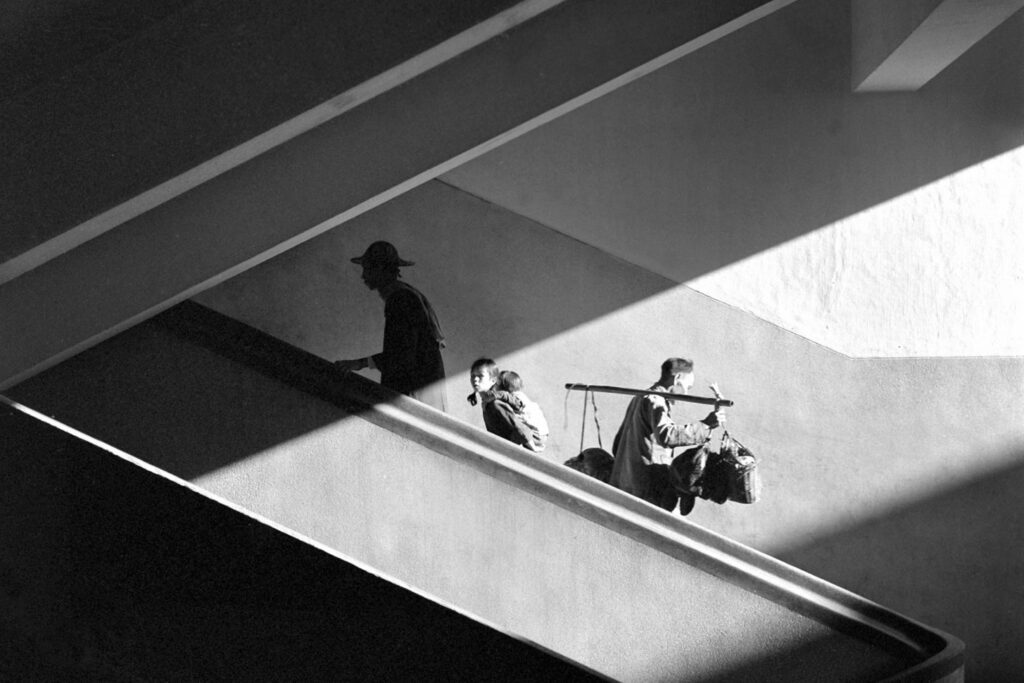
02 The Man Living with Light and Shadow
In the past, light and shadow were considered essential for photography. As during that time color film which is more attractive and characteristic for its colors was not developed yet, the photographers had to use light and shadow to convey emotions.
Regarding this field, Ho was considered one of the best. He was called “The Great Master” of photography. However, he often said that he was not a great photographer, just a common man who like to take photos. His photography was by instinct. He just captured what he saw and felt, and shared those stories to the audiences.
“For me the best photography is not from the camera but from yourself, your eyes, your brain, and your heart, not from some kind of equipment”
There was one tip Ho often used when taking photos: Waiting for the right timing, let the sunlight lay down and create a long shadow, or observing the atmosphere or people’s actions.
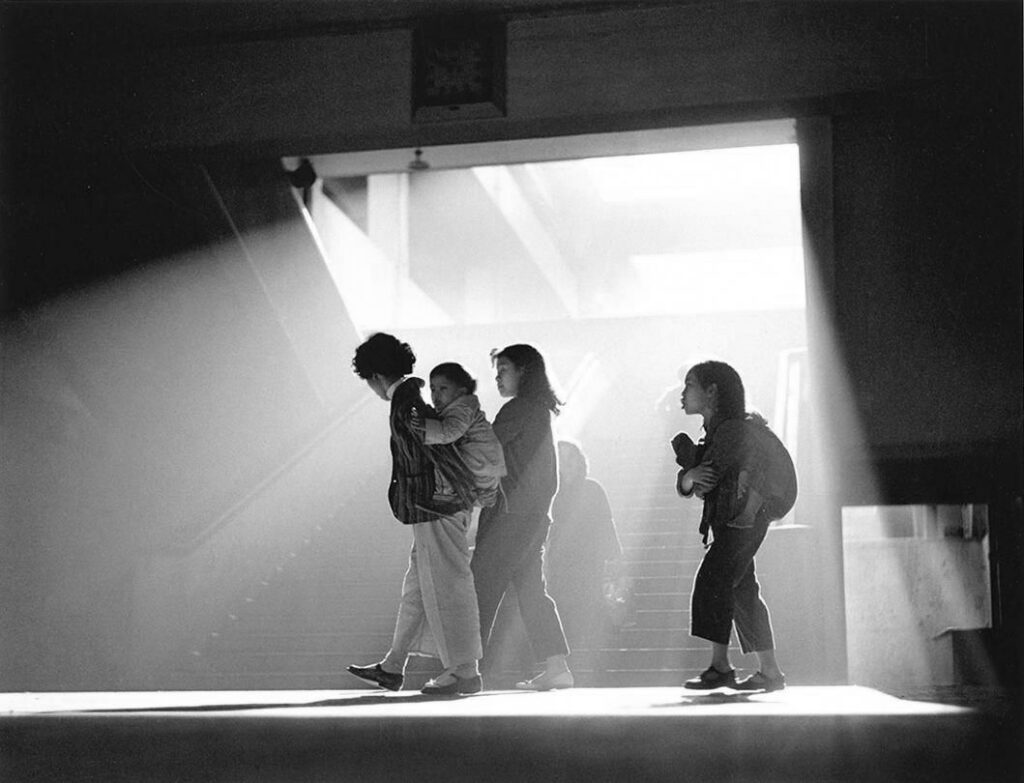
Little Woman ©Fan Ho
“You must have the precise moment to catch the spirit, the essence, the soul of the person…If you don’t have the exact moment, you have to wait for the right feeling. It is really creative work because you have the feeling inside.”
“It feels like expecting whatever gift God would grant, could be an old, poor homeless man or kids having fun playing. I follow my feelings when I decide whether the scene is worth releasing shutter. It requires such a great concentration and dedication in each photo, because it costs a lot for one push of the shutter button. I am like a cowboy who only has one bullet, therefore I must find the exact moment to shoot. One more thing is, for street photography, composition is the most important part. We might have various composition techniques, but they should not look conducted or unnatural.”
Many said that he was excellent in controlling natural light, because he did not use light only to highlight the photo but also to create ambience. There is no need to wonder why a number of Ho’s masterpieces look like cinematic scenes. Also, his compositions are simple, clean, looking modern though it was taken more than half a century ago.
More importantly, each photo of him could distinctively portray humanity. One of his most favourite photos was “As Evening Hurries By”, a picture of an old man pulling a heavy rickshaw along a calm riverside street which seems romantic. In fact the hidden meaning of this photo is the life struggle of the man. No matter how hard life is, he has to keep on grinding. 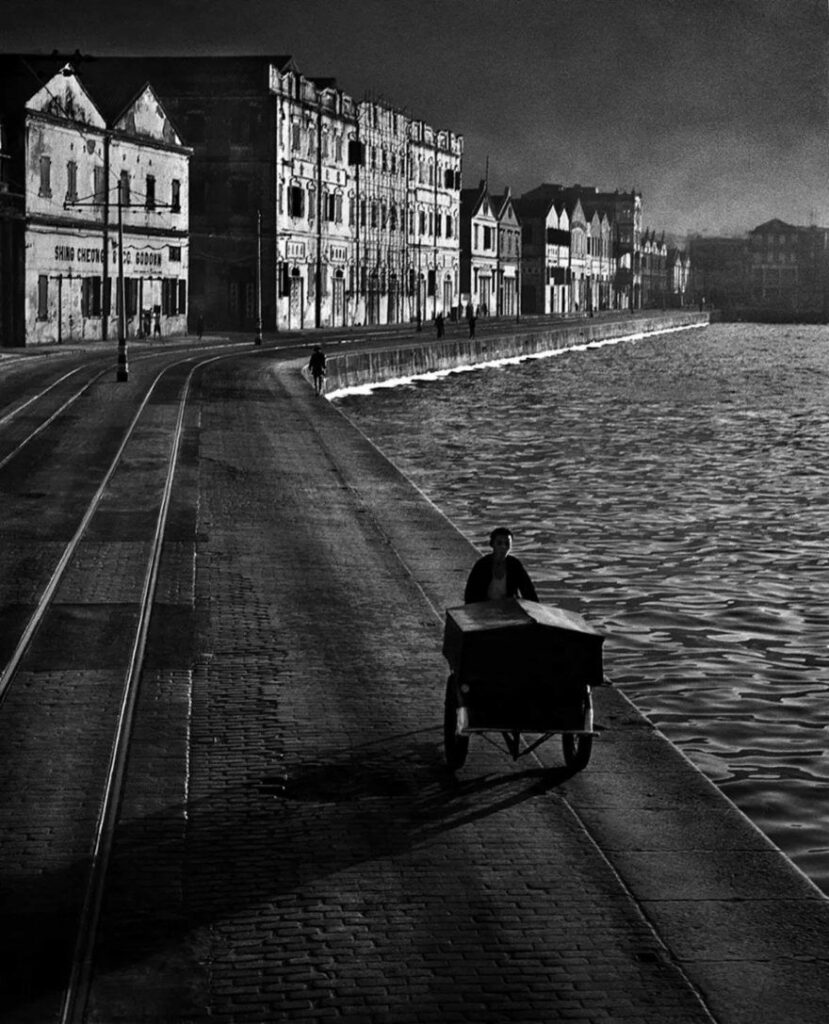
“I like taking black-and-white photography. It is not that I do not take colour photos. It is just that colour photography does not suit my world. Black-and-white photography can create distance. And in my opinion, distance from reality is such an important thing. As our reality is full of colours, the monochrome which has depth, dimensions and spirit would motivate the audiences to think, analyze and react.”
With the idea of generating work from his soul, Fan Ho became one of the most mentioned photographers up to today, although most of his works were produced during his younger days.
03 The Founder of Erotic Movies in Hong Kong
Though exceptionally gifted in photography, for 60 years ago it was extremely challenging to take it as a career. Ho therefore entered the industry of cinema, the other world that inspired him when he was young.
In 1961 Ho applied for a job at Shaw Brothers with a hope to step up and become a director. His role model was Federico Fellini, the Italian director of 8½ and La Dolce Vita.
His first job was a continuity assistant of the film The Swallow. After that he became an actor of a famous agency with an 8-year contract and acted in more than ten movies. His most prominent role was the monk “Tripitaka” from Journey to the West in 1965
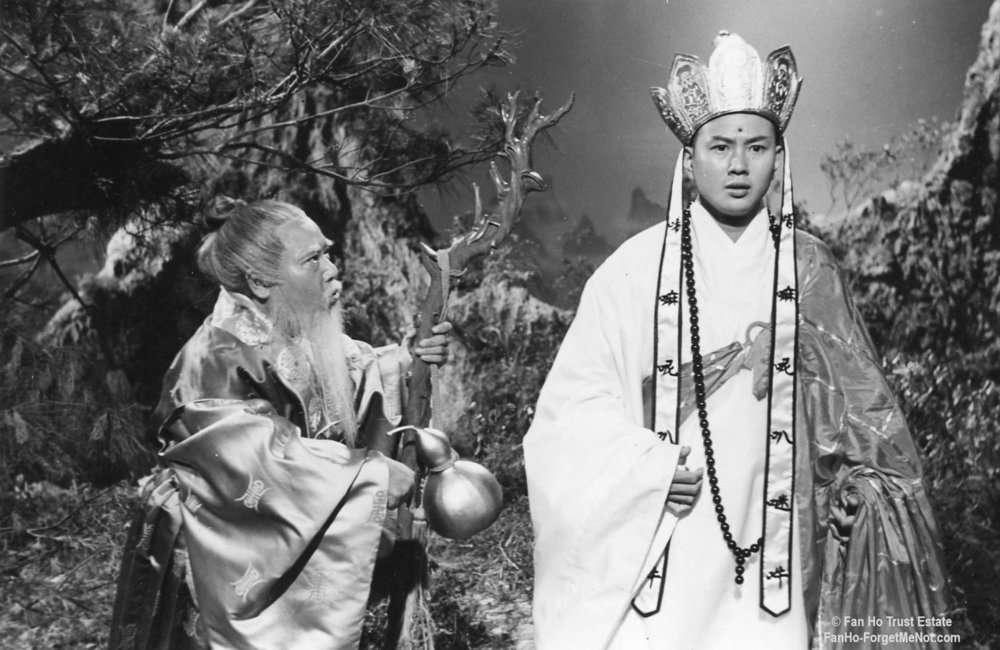
© Fan Ho Trust Estate
In the meantime he started to make experimental short films. The most successful one was Gulf, which received praises from film festivals around the world. It also won Best Film Award from Banbury Film Festival and became a pathway for him to fully develop his career in production work.
Unfortunately, a good movie from an artist’s and audiences’ perspective is different. The kind of film Ho wanted to make was not very profit-making in the Hong Kong film market. Instead he was assigned to direct the third type of film or 18+ film, which was full of sexual content and violence.
“I once held Fellini’s hand and asked him about his work, Fellini told me to ignore the critics’ words and do whatever I would like to, to which I always followed that advice of him, following my instinct.”
Ho tried to raise the standard for this type of film to the international level, whether in terms of cinematography style, storytelling or composition, which was unique compared to most films. They were capable of conveying explosive emotions, chaos and doubt in characters’ minds so vividly.
Many of his films, namely The Lock of Hearts in 1986 was awarded by Penhouse and screened in a lot of countries, or His Temptation Summary in 1990 that became the first 18+ film of Hong Kong that could make profit of more than 10 million Hong Kong dollars, with extensive praises from the critics. From that point he was nominated as a judge for a number of film festivals.
“People like to say that my work is full of stories, which encourage me to become a film director. Both use images for storytelling. For me photography and filmmaking are like sisters, the only difference is that one is still, and the other is moving.”
04 Back to the Start
At the age of 65, after finishing the film Ying Su, Ho decided to step down from the film industry and moved to the United States to live with his family.
His post-retirement life was not so comfortable. It could be partly that he was not accustomed with American society. His daughter Claudia said that Ho did not play any sports and sometimes isolated himself from people, which constantly affected his health until his family suggested Ho to pursue photography again.
However, as Ho did not fancy digital cameras, also the roads and houses around San Francisco Bay could not attract him, he instead recalled to his old, abandoned negatives from decades ago, and decided to give them a rebirth.
Ho said that most people would think that old negatives are useless. Some were discarded 40-50 years ago. Nonetheless, the ideal beauty of that era was different. The photo that looked unattractive by that time might become the most beautiful one nowadays. All is up to one’s thoughts and experience. For him, returning to the stories in these old negatives was not different from discovering a gold mine.
The other interesting part was that Hong Kong in the past and present barely share similarity, whether its people, buildings, alleys or streets. Ho’s photography is like a projection of history and background of this small city throughout the past decades.
In 2000 Ho held his first photo exhibition in Palo Alto, California. It received such highly positive feedback that the senior photographer could restore his confidence. His daughter said that it was as if he could rebound to a long-lost first love, which was a bliss for him.

Approaching Shadow © Fan Ho
After that, Ho continuously launched exhibitions, his photos became popular and widely appreciated, like “Approaching Shadow” which was auctioned for more than 48,000 US dollars. He also received invitations to speak and offers to be an honorary member of photography associations in many countries. Upon the year 2014, he returned to Hong Kong as a photographer who was everyone’s inspiration.
Ho passed away on June 19, 2016 of pneumonia at the age 84. Prior to his death, he and his daughter had selected more than 500 black-and-white photos. Eventually although Ho was not there to embrace the success of “Portrait of Hong Kong” project, but at least this set of photos shall be a witness to the greatness of this legendary Asian photographer forever.
ข้อมูลประกอบการเรียบเรียง
- • เว็บไซต์ Leica Liker
- • เว็บไซต์ OSU.EDU
- • เว็บไซต์ Fan Ho Official Website
- • เว็บไซต์ SCMP
- • YouTube M Plus

